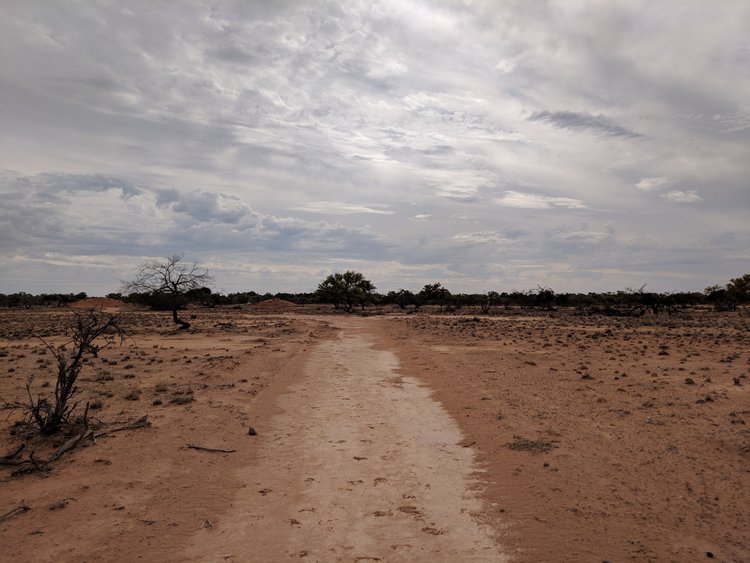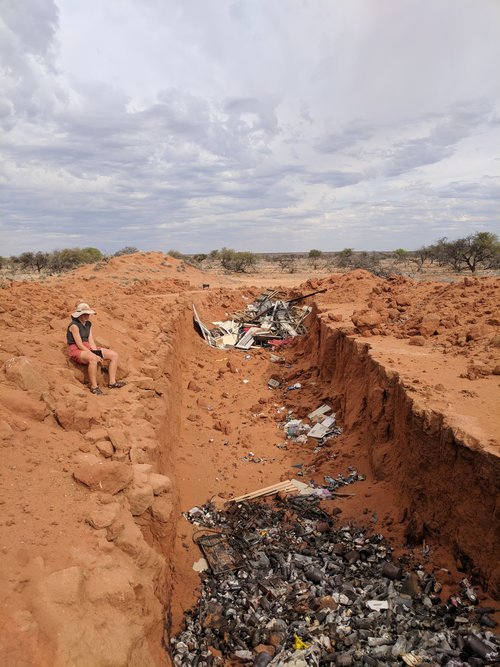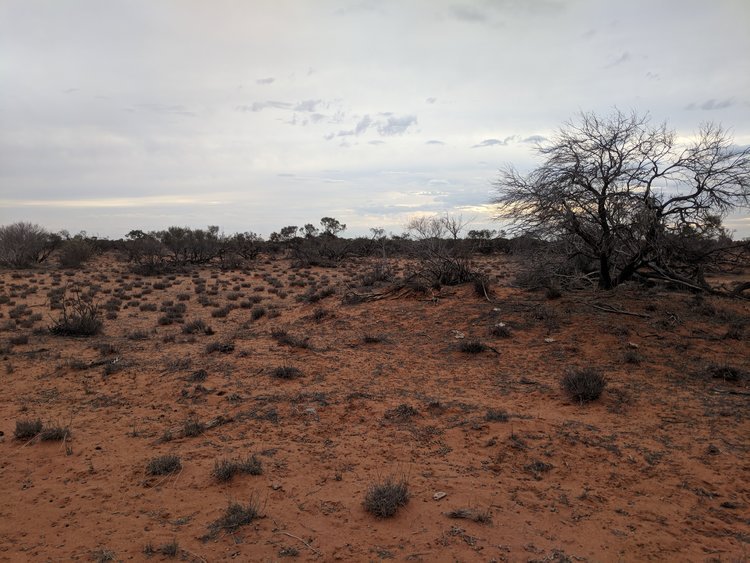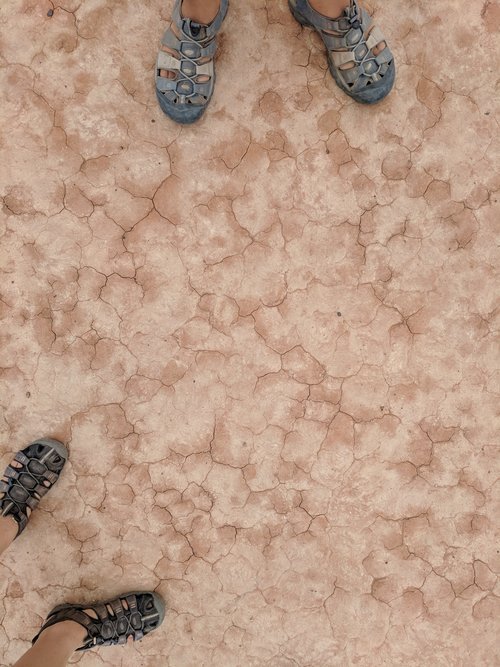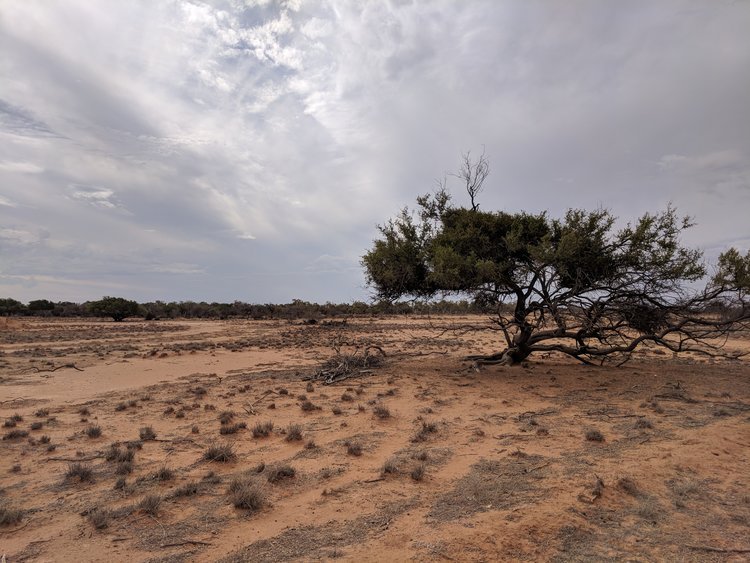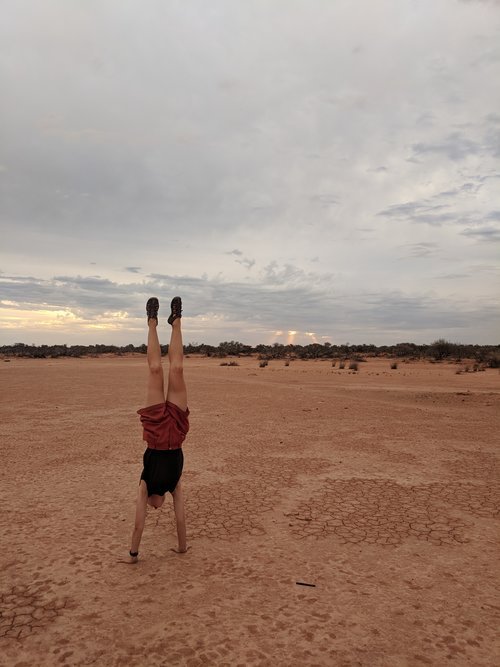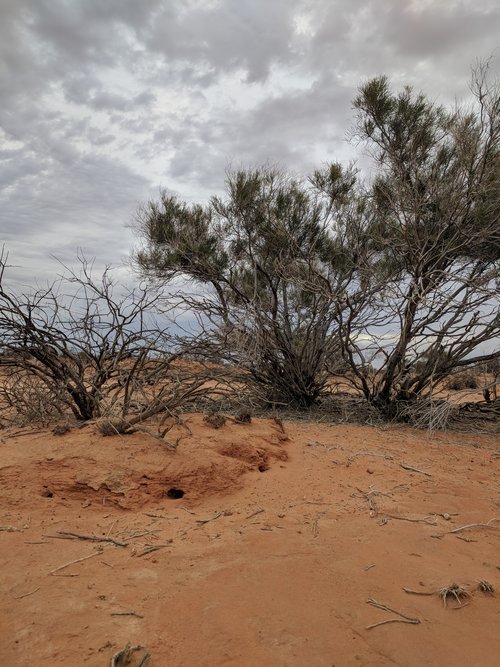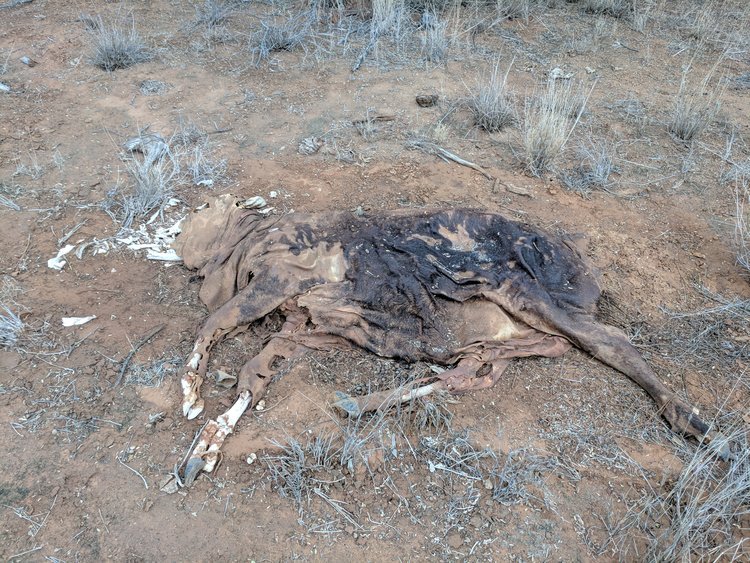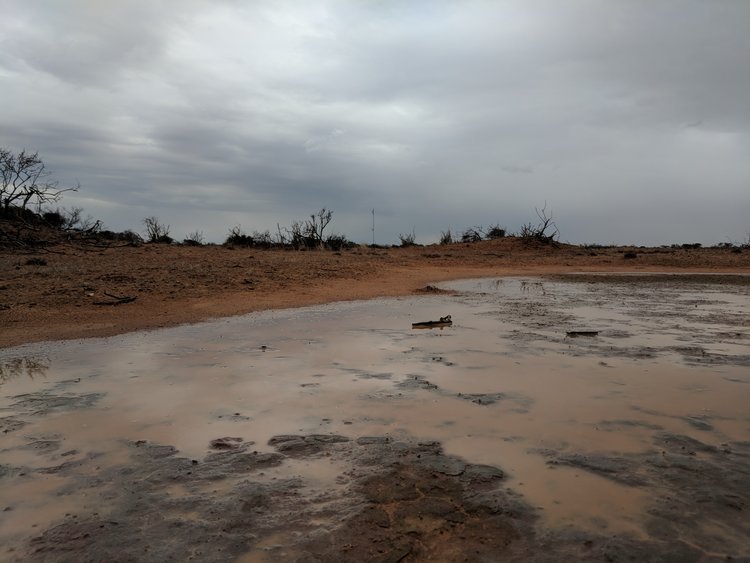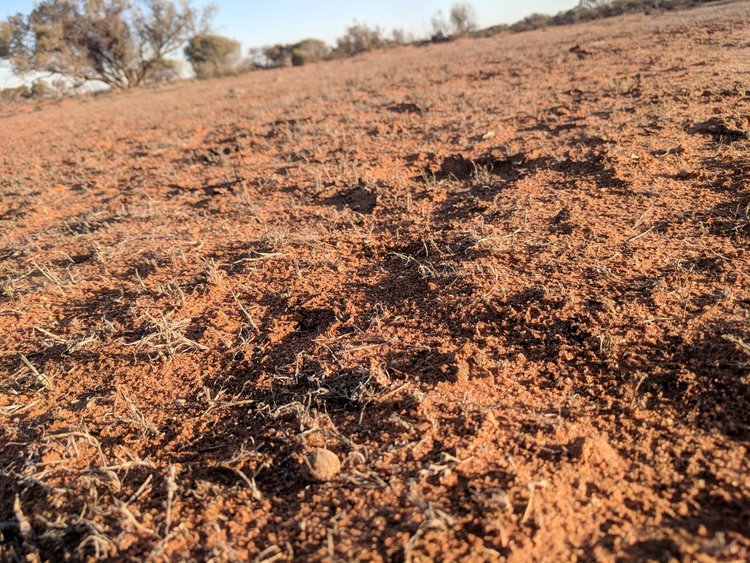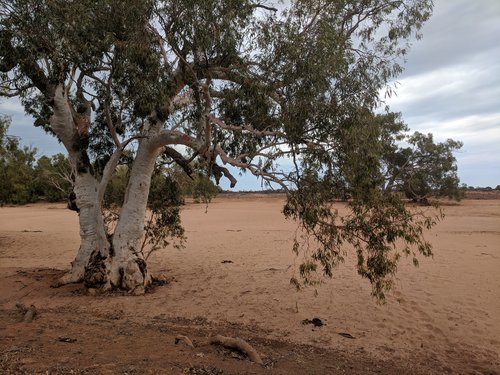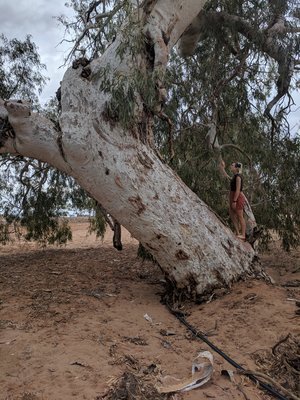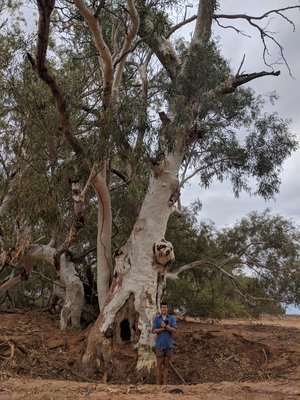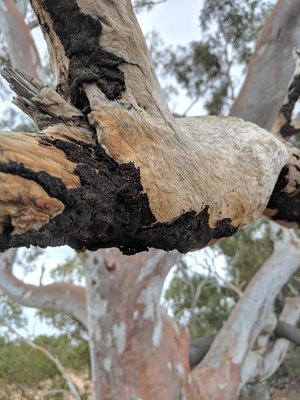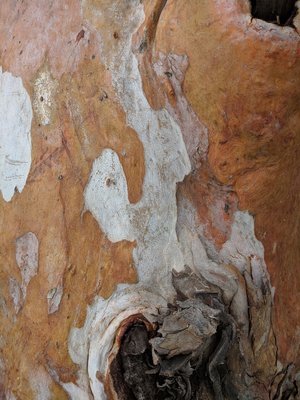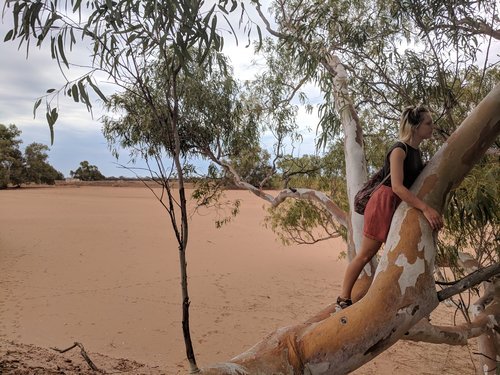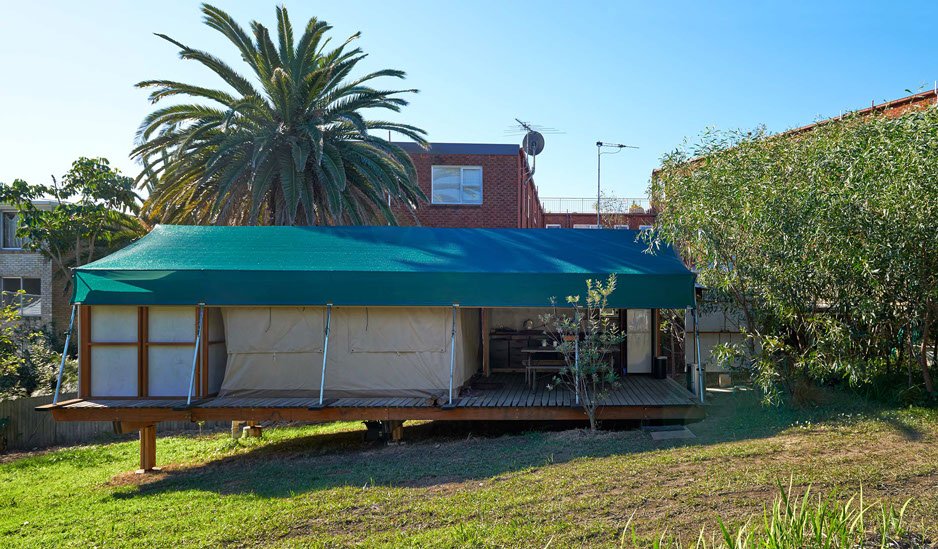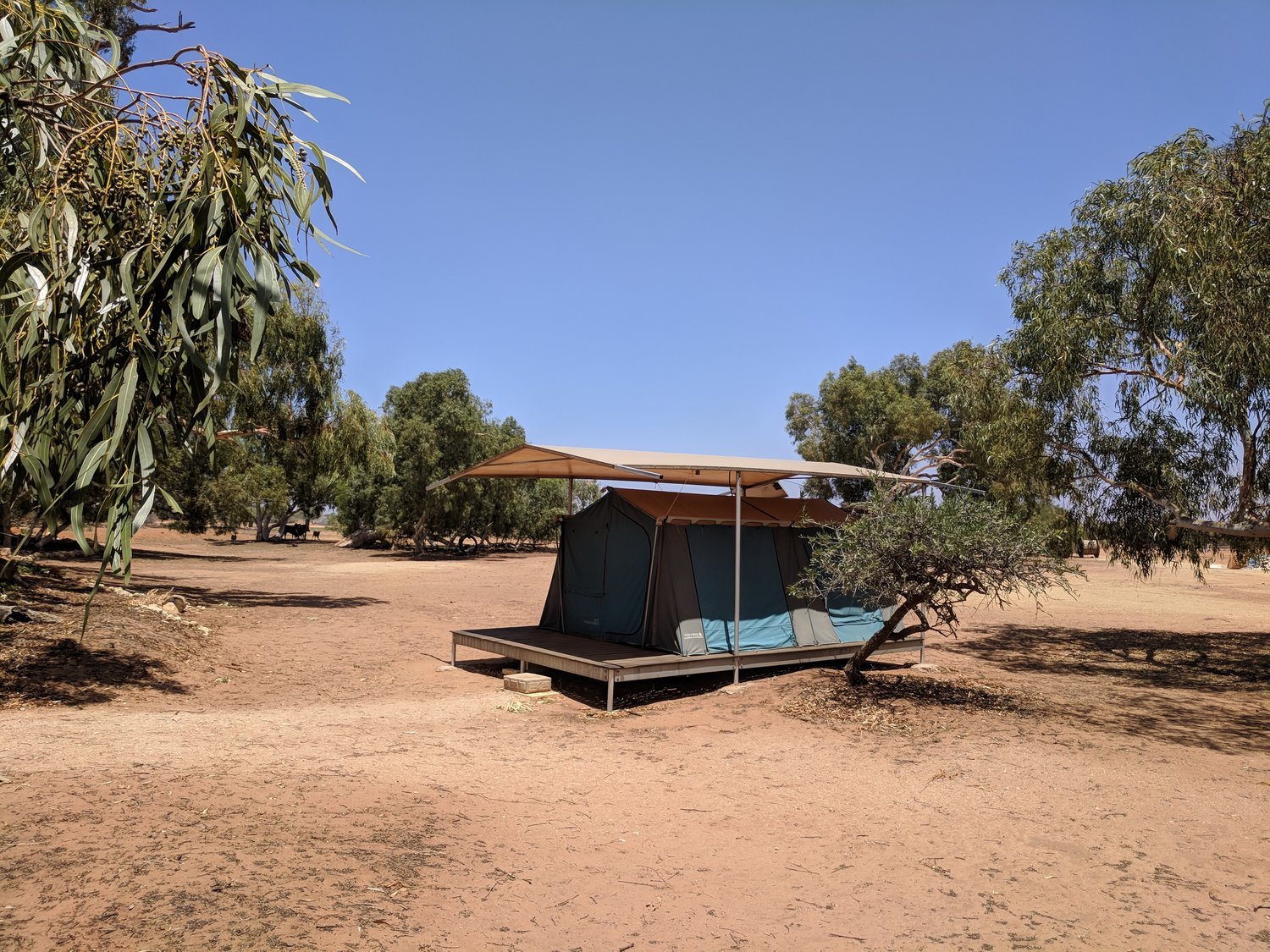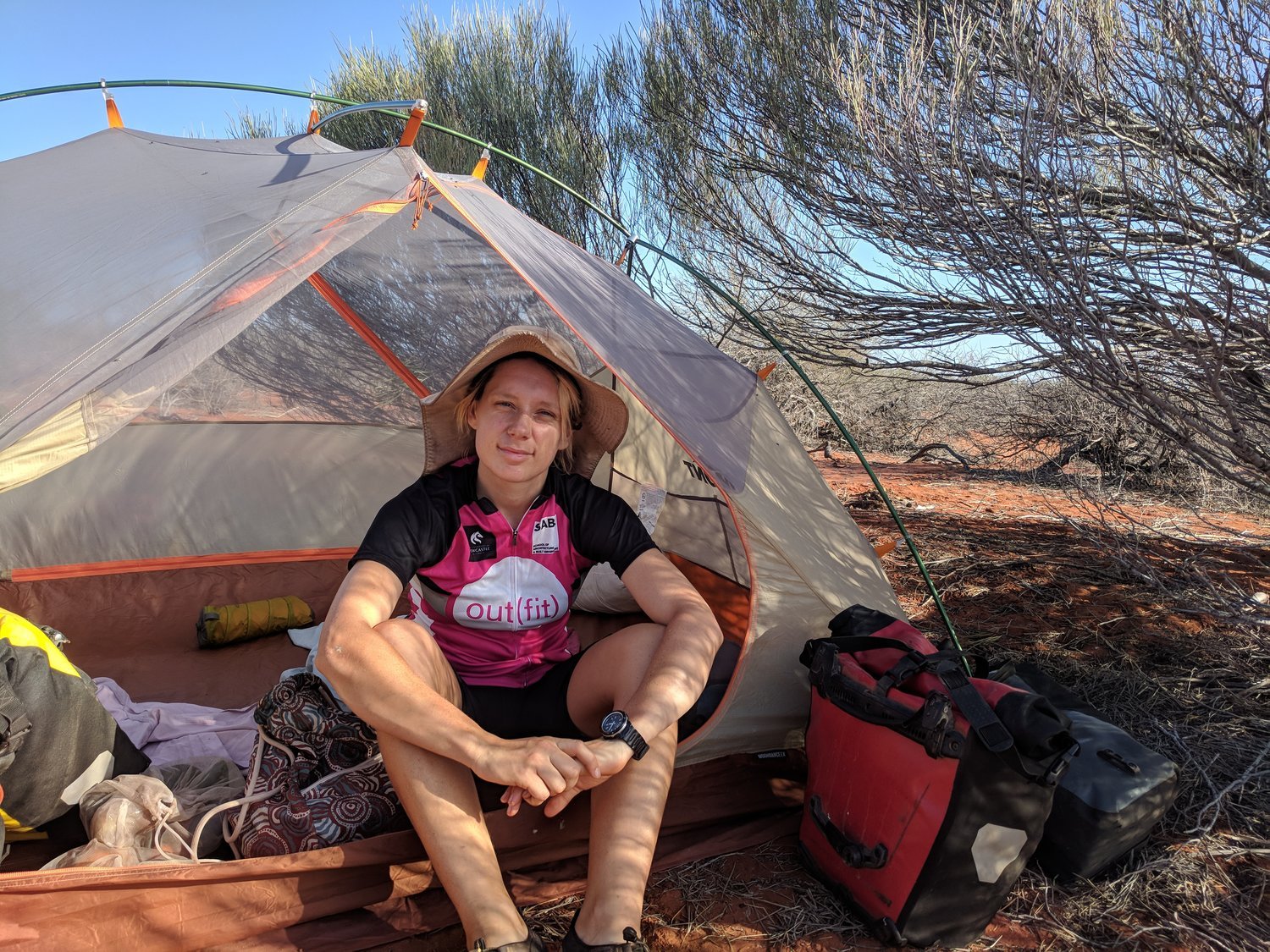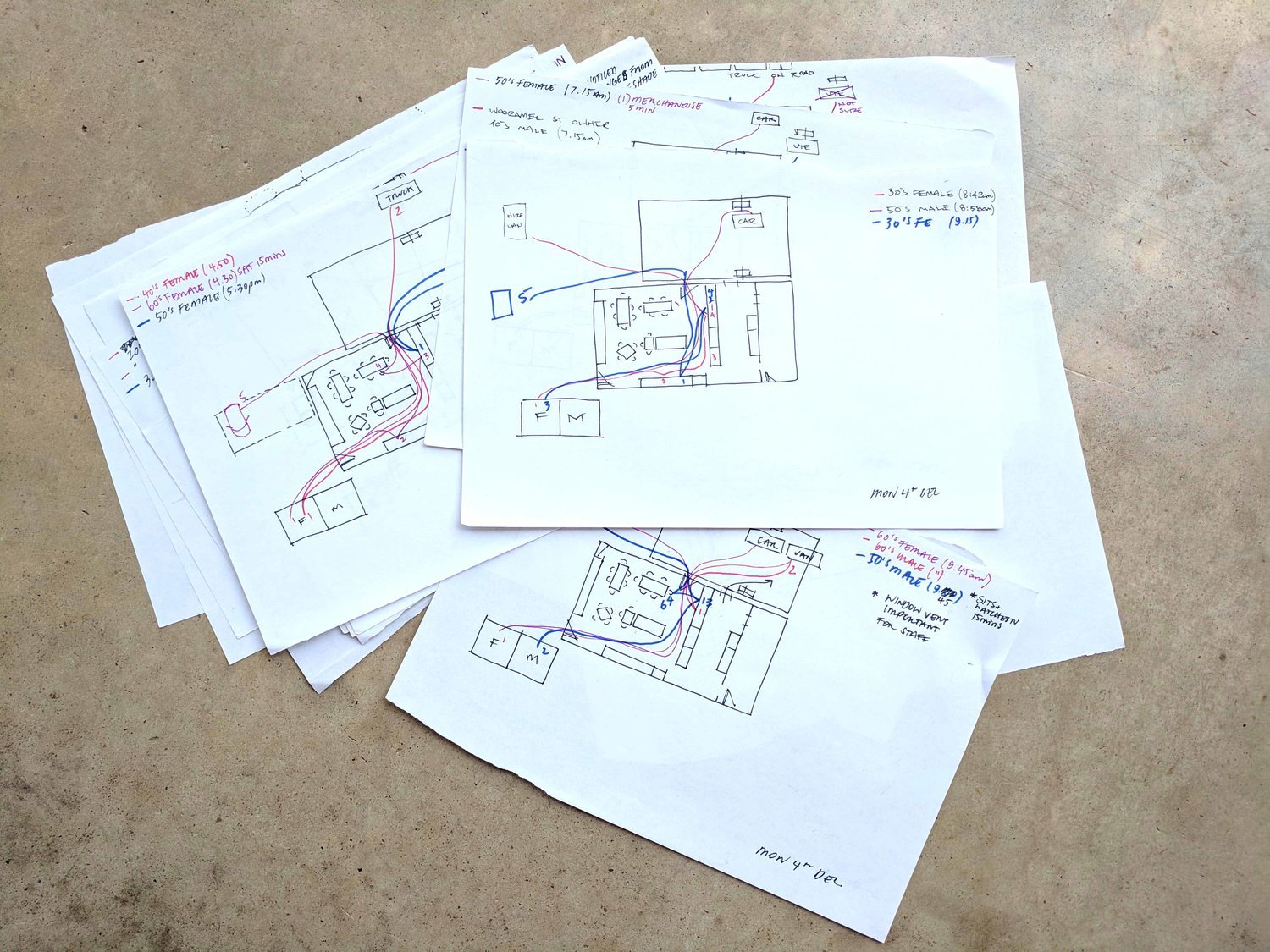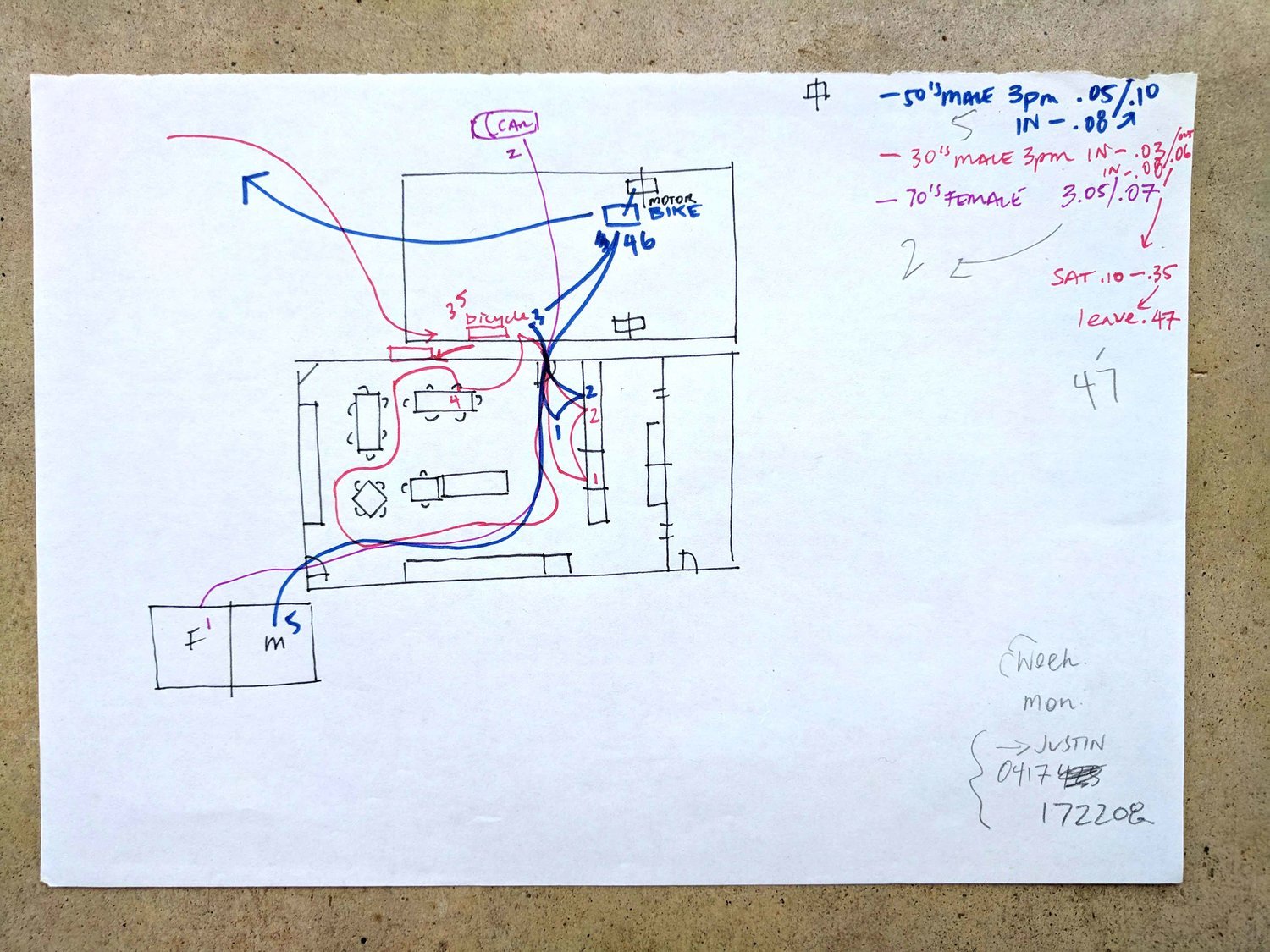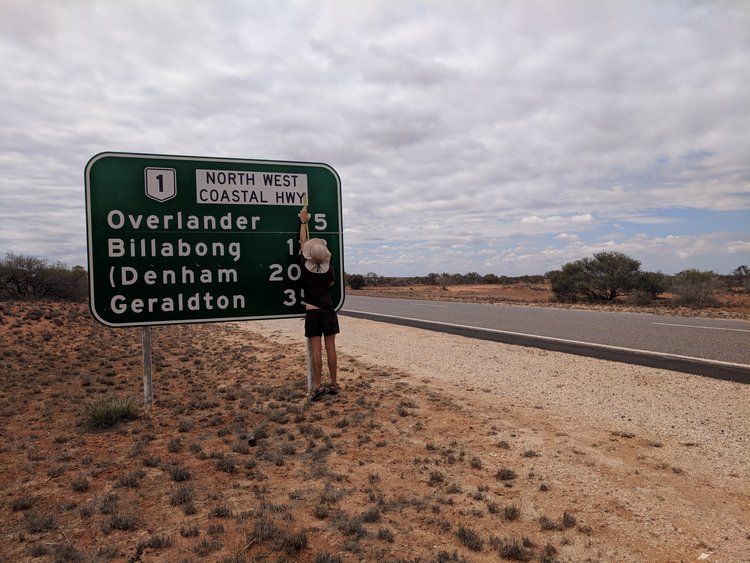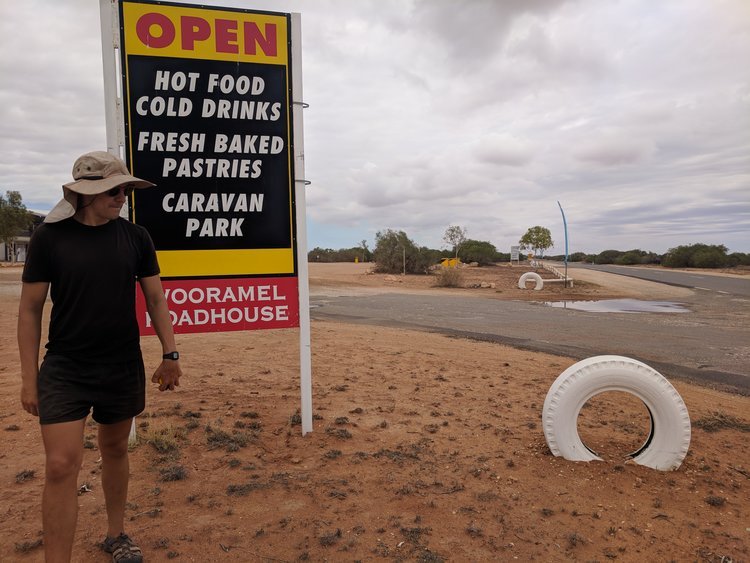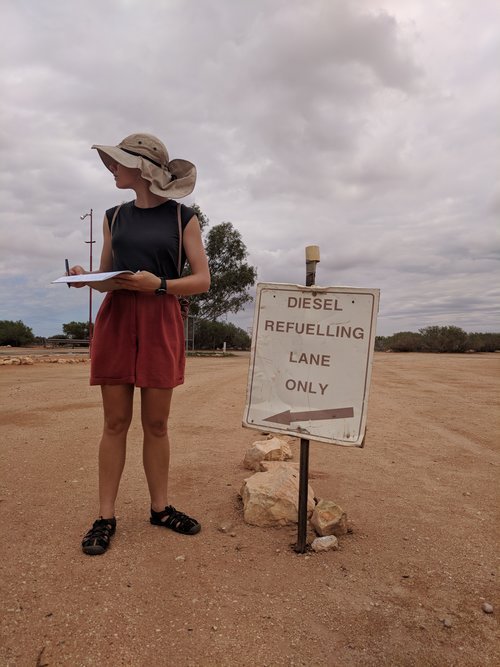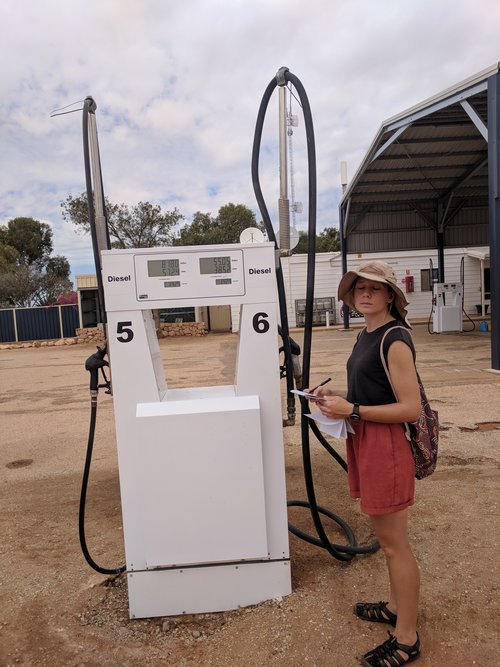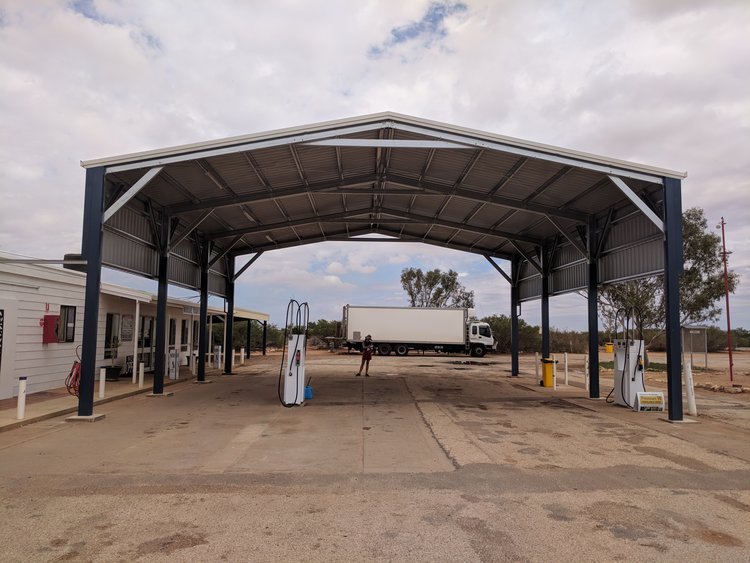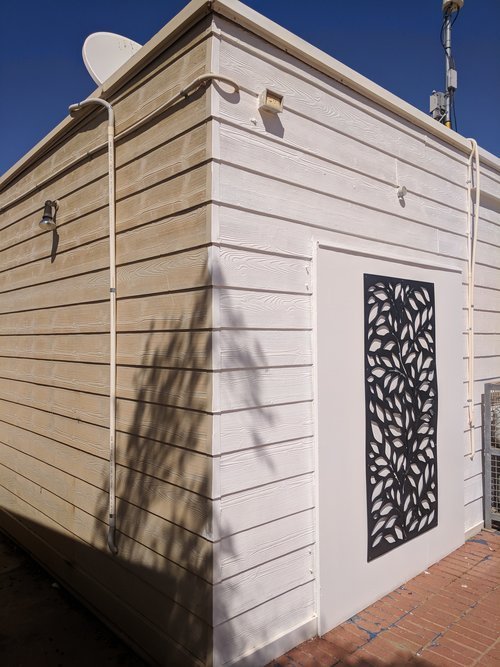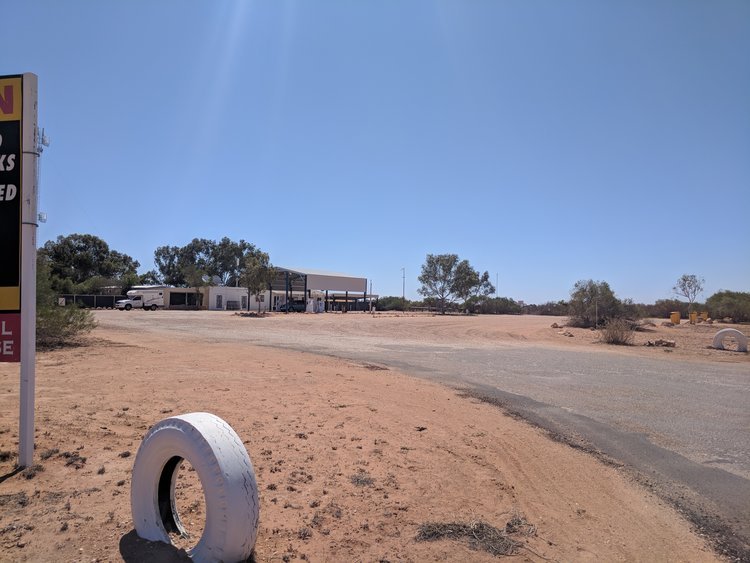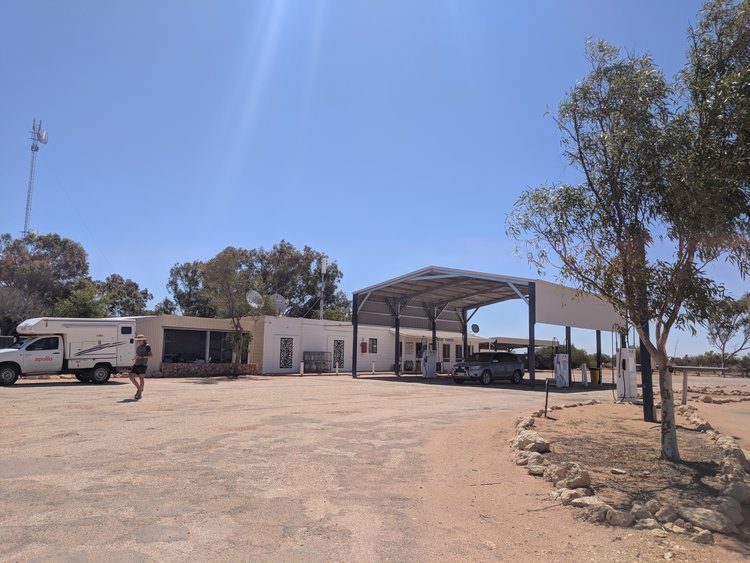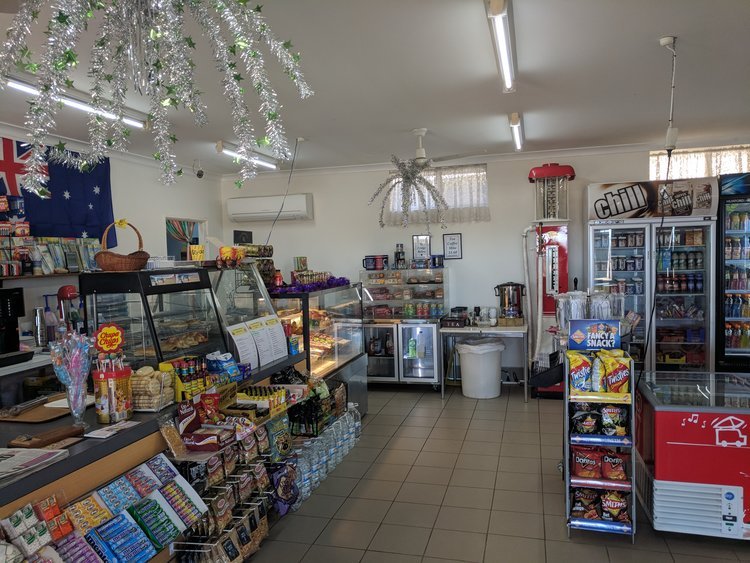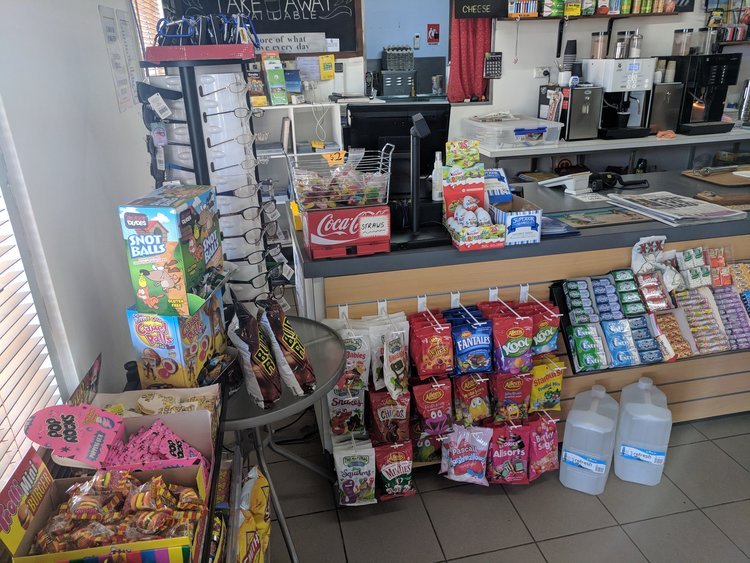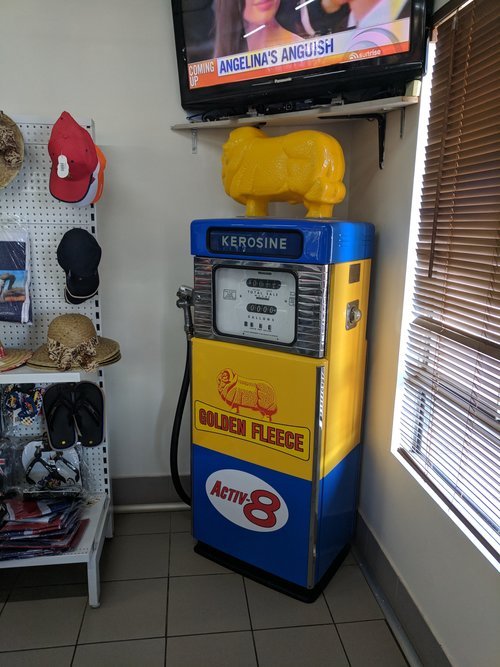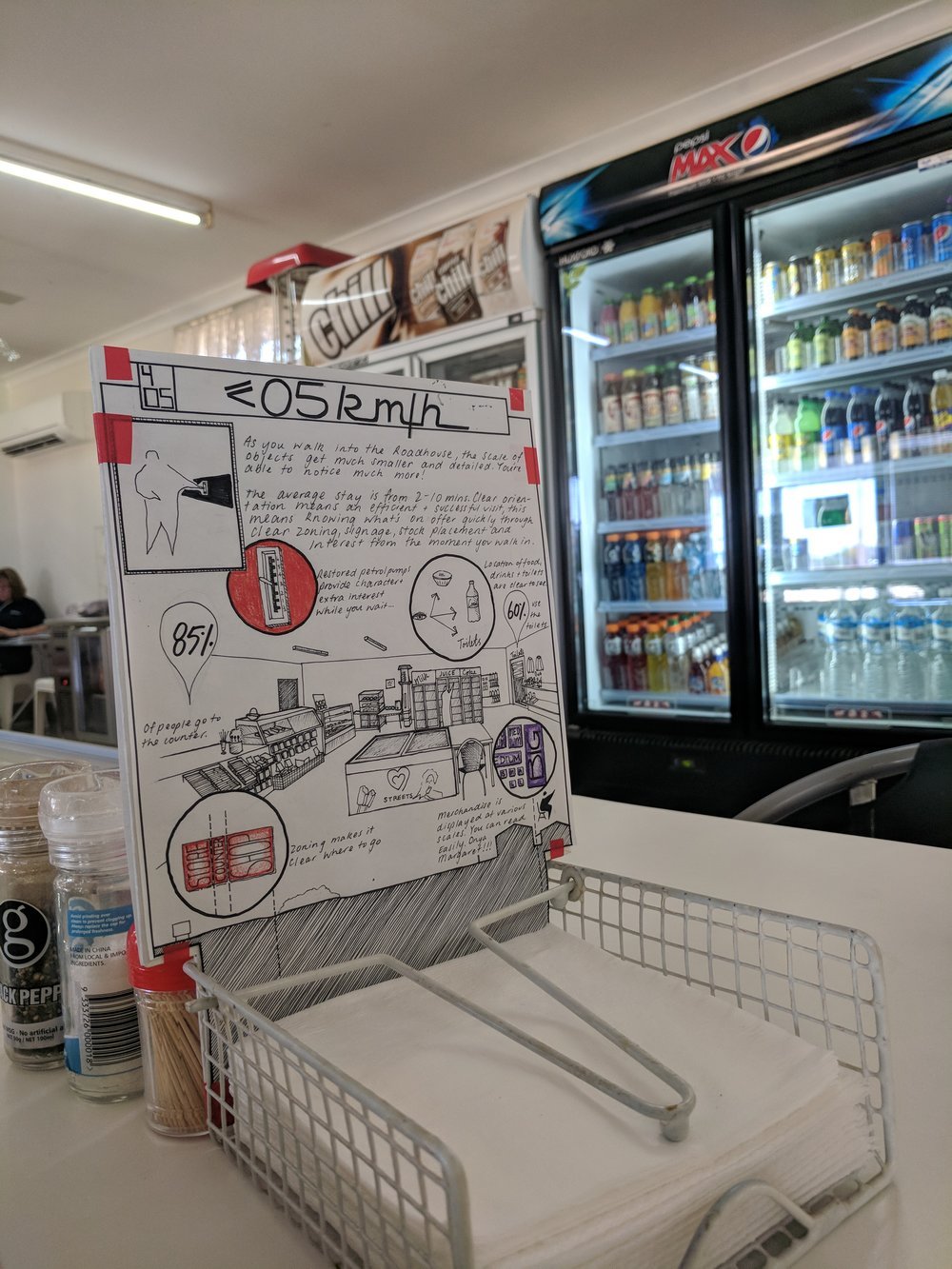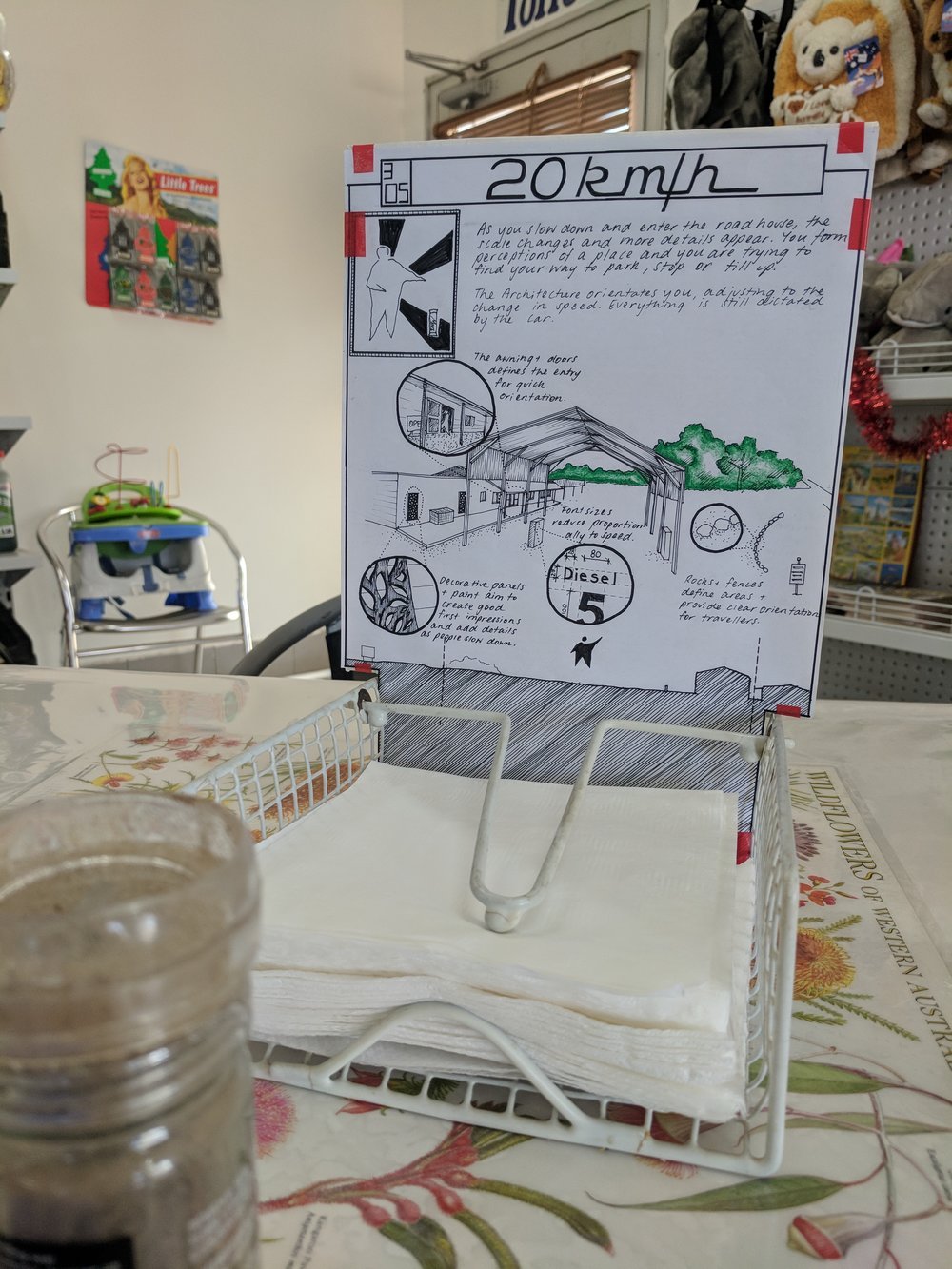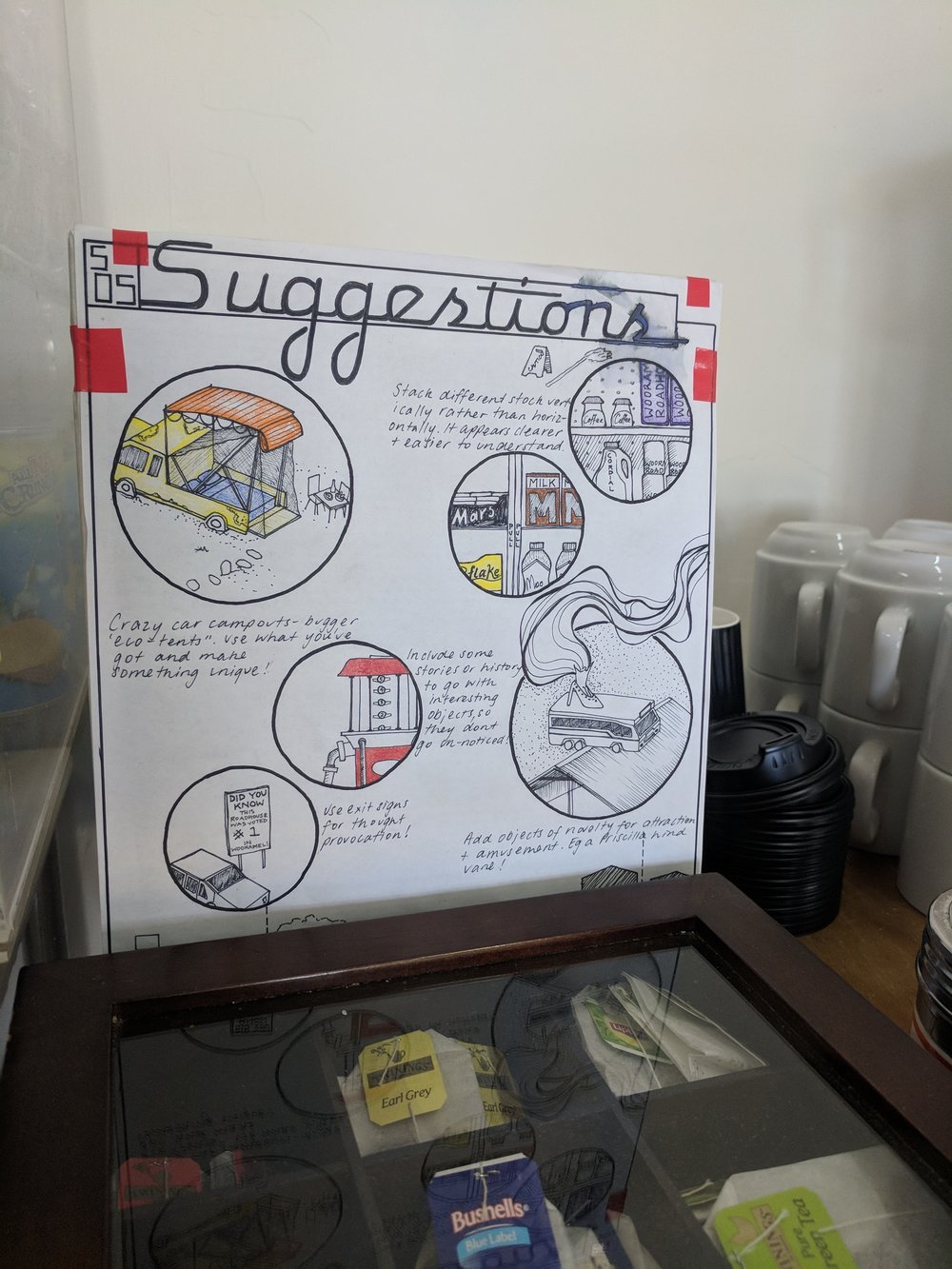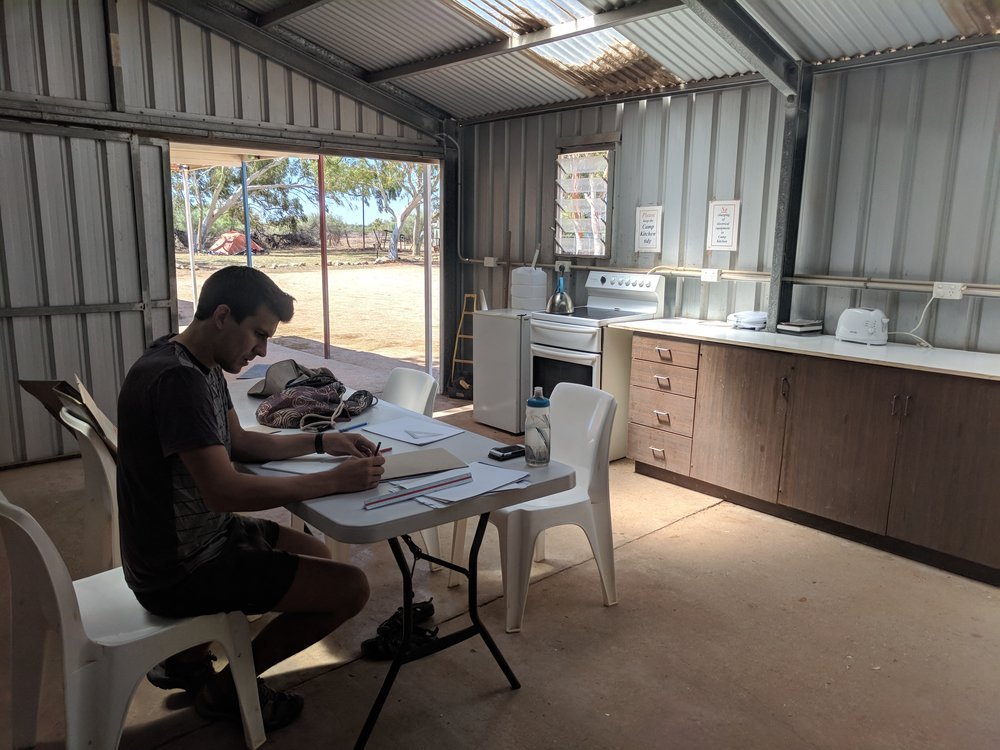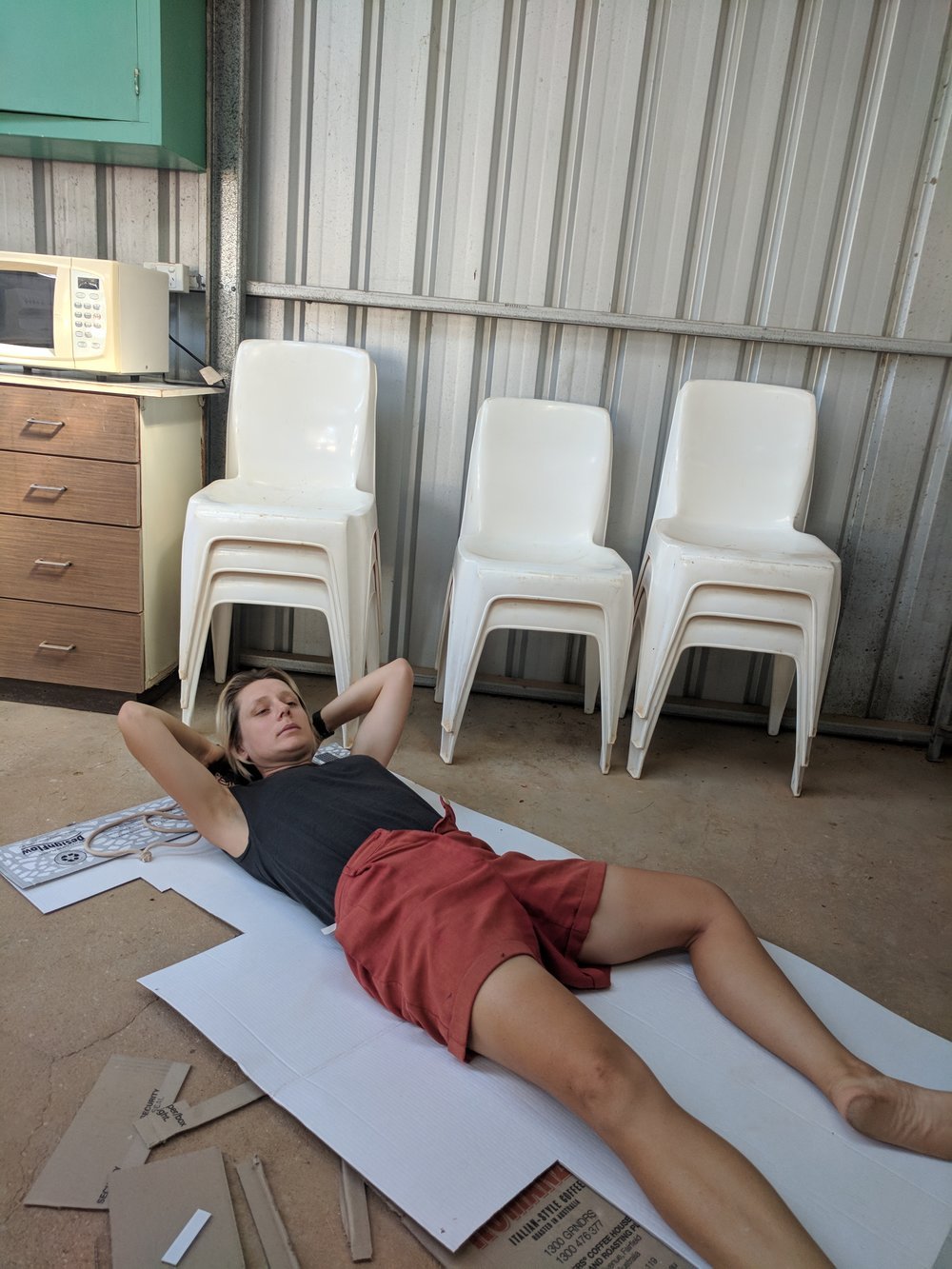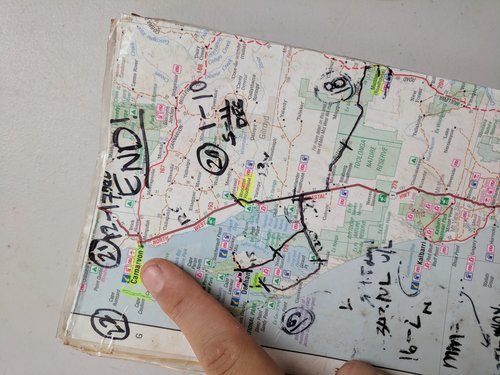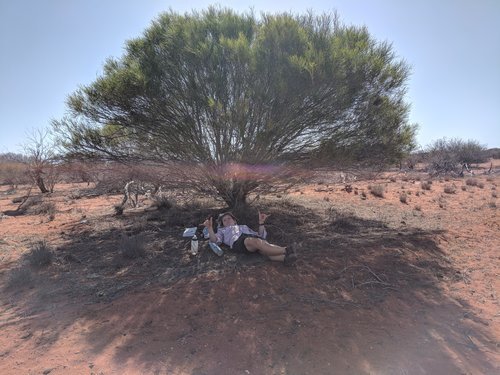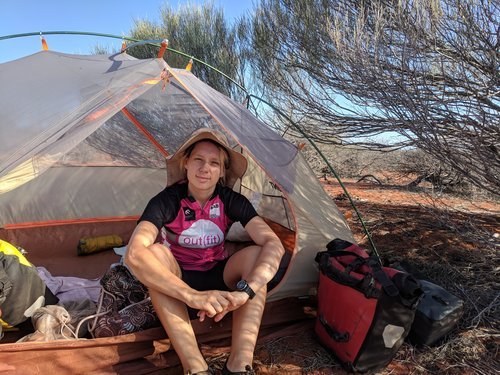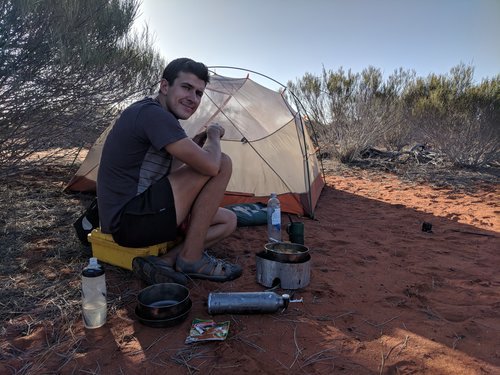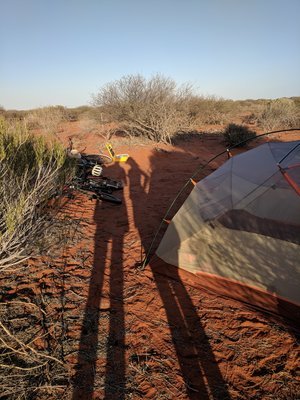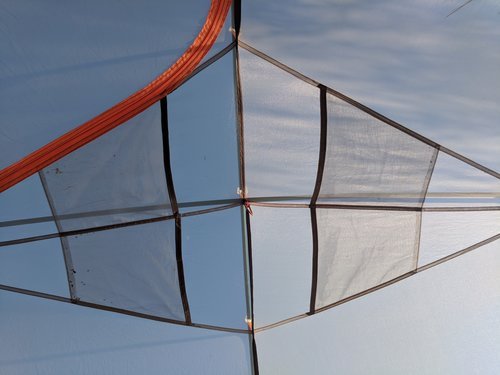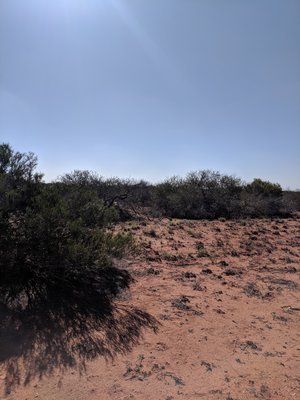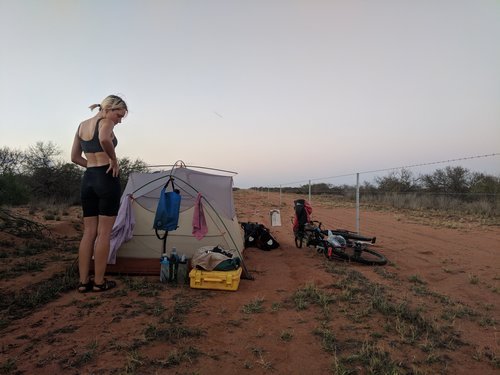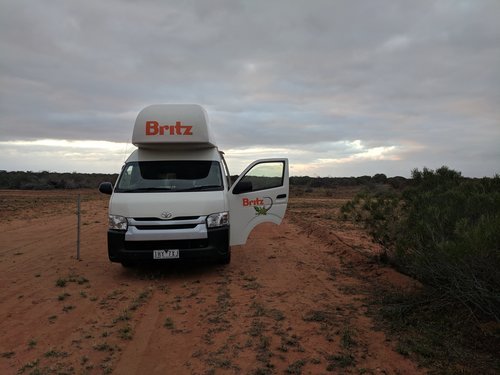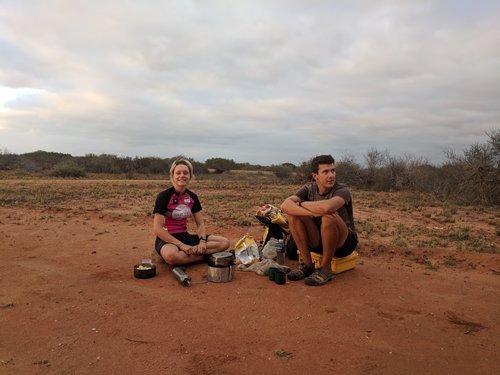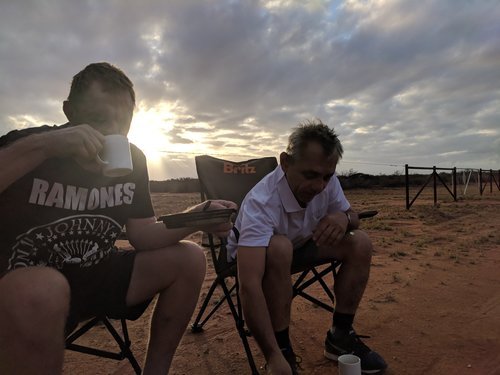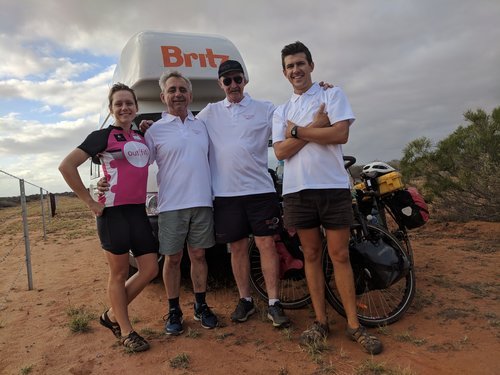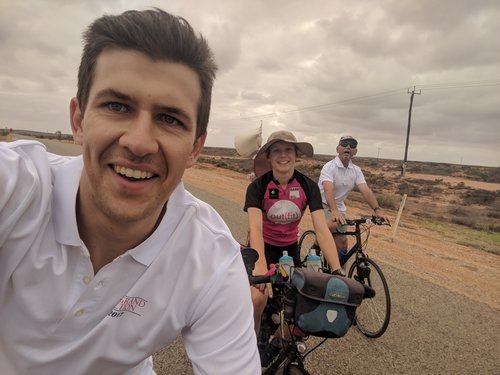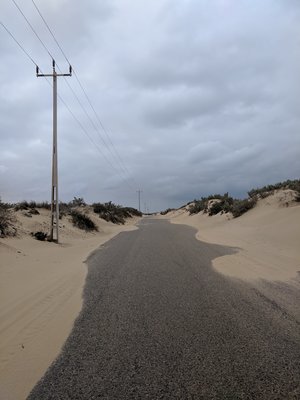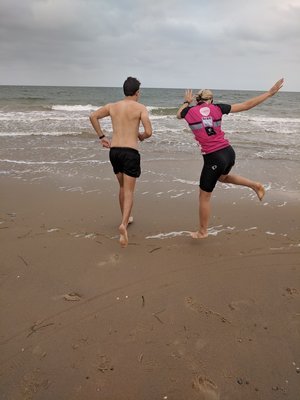The Grand Section Guardian #020 - Stop 20 Wooramel Roadhouse/December 23, 2017
The ferocious southerly October to February trade winds that wrecked countless ships off the Western Australian coast gave us an easy ride into our penultimate stop, Wooramel Roadhouse. Subject to the whim of the tourist seasons…both of them….on and off, the roadhouse is typical of many road side stops across the continent, dictated by the car. However, as the nature of transport evolves so too must the architecture of the road.
PLACE
Friday 1st – Sunday 10th December
Located on 30 (mostly roadside) acres, Wooramel Roadhouse is only six kilometers inland from the ocean, however it is part of the branch of the country where the desert runs into the sea. Glimpses of the ocean from the road contrast with the low acacia shrubs that dot the landscape amongst the red earth.
Predominately cattle country the land is buggered, similar to what we saw back at Wooleen. Dust towers rise up on the horizon from the bare, dry earth as wind howls. The few perennial grasses still clinging to the soil are munched to their roots and look battered beyond saving, the browse line (the datum line created by animals eating trees) is terrifyingly high, not as you might think from gigantic cows but in fact, from feral goats, numbers beyond count. Originally relied upon for their milk, meat and hardiness these faunistic rebels now run amuck, eating anything and everything, stripping branches and the ground of new sprouts. Hold onto your hats!
Located on 30 (mostly roadside) acres, Wooramel Roadhouse is only six kilometers inland from the ocean, however it is part of the branch of the country where the desert runs into the sea. Glimpses of the ocean from the road contrast with the low acacia shrubs that dot the landscape amongst the red earth.
Predominately cattle country the land is buggered, similar to what we saw back at Wooleen. Dust towers rise up on the horizon from the bare, dry earth as wind howls. The few perennial grasses still clinging to the soil are munched to their roots and look battered beyond saving, the browse line (the datum line created by animals eating trees) is terrifyingly high, not as you might think from gigantic cows but in fact, from feral goats, numbers beyond count. Originally relied upon for their milk, meat and hardiness these faunistic rebels now run amuck, eating anything and everything, stripping branches and the ground of new sprouts. Hold onto your hats!
We are told there is a deep history of the place with the local aboriginals. However all of the local mob now live away, in Carnarvon or elsewhere. So it is something that we couldn’t tap into or readily present. In fact we were not able to find any written history on the place at all.
PEOPLE
Margaret and Neale, Owners of the Roadhouse
The owners of the Roadhouse and WA locals. Neale and Margret have recently taken over the roadhouse and have made small but significant changes. As we walked in after a sweaty ride, Margaret instantly made us feel welcome despite our smell. Throughout the week as we intermittently inhabited the road house, she weathered the storm of questions, requests and let us take over a table to draw, observe and document roadhouse life. Margaret is the workhorse of Roadhouse, ensuring customers leave happy, well-watered and fed. She was the only person to look at our exhibition insitu. In classic Margaret style her feedback was low key, she analysed the exhibition not through a hypothetical lens but as though we were in a job interview. She went on to talk at length about how, as an employer, she viewed the work and journey as something original, dedicated, taking initiative and not needing all the bells and whistles of life and 5-star accommodation to be happy. All valuable aspects for employment, so that is something our parents will be mightily relieved to hear…
Neale currently drives daily to Carnarvon to operate another service station. Neale is the dreamer of the pair and is full of ideas to make things work better. Before buying the Wooramel Roadhouse, the previous owner commented that everyone wanted cappuccinos, so almost unsurprisingly, Neale put in coffee machines straight away. However it is these small observations that have made the business a success.
He is fully aware of the changing nature of the roadhouse and knows that in order to keep up things must change too. Only two kilometers up the road lies Wooramel Riverside Retreat which is a station stay with “eco-tents”, artesian baths and river side camp sites. They have even begun to do food. Neale is very aware that the roadhouse is quickly becoming the second option for camping. He has ideas to create his own “eco-tents” in an orchard of mangoes and appreciates the power of architecture as the draw card and symbol as a worthy place to stop.
One of the incredibly admirable qualities that Neale and Margaret have in droves is resilience. With some tough times under their belt, stiff competition and relatively hard circumstances to operate a business in they are cheerful, willing to help a couple of cycling scumbags and quietly optimistic. A quality we have grown to admire seemingly more prevalent outside of the cities.
Neale, Margret, Bobbie and Owen with air gap to help protect against smelly cyclists.
Open from 6am - 6pm (6-7 in the busy season), the crew at the Roadhouse work long days, in addition to this they live on site too. There are almost zero amenities for entertainment or recreation (unless you like long walks through paddocks, which we partook in and were most pleasant). Margret and Neale realise the realities of this in the liberties they allow their staff, aiming to ensure longevity and amicable relations. Work in the Roadhouse (when not busy) is relaxed, time spent reading papers and investing in crypto-currencies is the norm rather than militant cleaning regimes or the like. This is a technique used by the duo as their pool for staff options is not endless. In saying that the Roadhouse is spotlessly clean and efficient, they balance it well.
STUFF
Wooramel Roadhouse is a conglomerate of buildings consisting of, the main relocatable roadhouse building, a big shed out the front, a camp ground with camp kitchen the ubiquitous donga toilet block and accommodation rooms.
Roadhouses began as a stopping and refreshment point for trucks who were the main patrons of the road, but as technology progresses so too does mileage/tank size removing the need for stops so often. Today, Grey Nomads and foreign tourists in rental vans zip back and forth along the West Australian coast. More and more cars today can drive half way up the continent on one tank of petrol; 800kms just like that. This calls in to question the raison-d-etre ( wanky/french way of saying ‘reason for being’) for ye olde roadhouse.
How does a petrol station become a sure stop when there is no longer the primary need for people to stop for petrol? As we’ve seen before, diversification is the answer. With petrol as ‘the magnet’, the roadhouse makes their living from what they sell inside the shop with the booming (seasonal) tourism of WA helping to push people up and down the coast. Tourism is projected to grow with the WA government strategy wanting growth to have a value of 12 billion by 2020, aiming to double its value since 2010. For Wooramel, petrol is no longer sustaining, but people always need a break, a loo, a drink and something to eat and sometimes even a night’s stopover. Increasingly important is the power of an online presence, good quality service & clean amenities are a quick grab for prospective customers on wiki camps, trip advisor or Facebook. Actual experience is becoming accessible via online reviews and dictates a lot!
How does architecture work within this environment? Initially it is the architecture that signifies an impending stop. Big bold moves have to be eye catching at 100km/h, we are talking some serious Gehry vibes. However, when referring to the caravan park Neale made an off-hand comment that “people love trees”, perhaps having a wonderful garden is just as powerful as having a fancy shed out front, now that people are able to share ‘experience’ online.
Gehry VS Garden - the ultimate architectural showdown
Once people have made the decision to stop at Wooramel Roadhouse the scale changes, details and orientation become paramount. People need to know clearly and efficiently what their options are and where they are going or there could be mass confusion! Tourist-a-geddon! Symbolism becomes important in directing people in and out as quickly as possible. The simple front awning over the entry door is the clear symbol of an entry, causing no confusion. We spent two days mapping the movements, time and stops of everyone that walked into the roadhouse. We found out that:
60% of people who entered the Roadhouse went to the toilet, with 11% of those not buying anything (ouch!)
69% of people visiting the toilet were female
85% of people who came into the roadhouse visited the front counter for petrol, coffee, snacks or hot food.
28% of people bought a drink and;
62% of people stayed for 5 mins or less with 81% people staying for 10 minutes or less (It’s clearly not a place for ‘staying’ in)
It became clear that orientation was crucial, clear views of stock, toilets and point of sale became the markers for easy and efficient movement and transactions of customers. Being a place of transience turnover of customers becomes paramount in the busy tourist season.
EXHIBITION
The serviette holders (which no one read)
7th & 8th December 2017
And so, what does it take for people’s attention to be grabbed at the varying speed of experiences? What is the difference in symbolism for travelling in the car at 90km/h and that of walking at less than 5km/h? Taking cues from ‘Learning from Las Vegas’ and Jan Gehl’s ideas of the speed of experience we took a step a bit left of field to look at symbolism of space, rather than the buildings.
Learning from Las Vegas talks of an importance "to take a non-judgemental stand in studying new space order", for instance looking at the architecture of petrol stations. And so, for our week of study we studied signs, measured fonts and looked at styles of communication according to different speeds. From the road to the chocolate bar, we looked at varying scales and tracked where people went once in the shop, length of time stayed and what they did. It’s not particularly sexy to think about cars or petrol stations in architecture but the reality is there is much to learn from how speed dictates experience, scale, symbolism and communication. No judgement, remember, the judgement comes later….online.
In keeping with the slower pace of inside and wanting to blend seamlessly into the Roadhouse aesthetic we opted for napkin “things” which provided a series of information, “Learning from Wooramel Roadhouse” about the Roadhouse and three speeds of experience – 90 km/h (car on highway), 20km/h (car on petrol forecourt) and <5km/h (walking inside). Actually surprisingly, no one seemed to read one of the five information “things” dotted on the tables inside the roadhouse. Right in front of people’s eyes as they ate lunch, the customers seemed to stare blankly in to nothing, we were quite surprised… anyway. A highlight was that we made a ‘suggestion’ and the next day, Margaret had stock accordingly to give it go. Thanks Margaret!
Suggestions
Stock products vertically rather than horizontally to ensure direct views from entry for clear orientation
Use the reverse side of entry signs for provocations or more detailed information as people are still at an intermediate speed. The power is in the returning customer we’re told.
Accentuate the character of the roadhouse with information on the feature character pieces so they don’t get lost in space
Novelty is a huge winner! Use a giant Priscilla Queen of the Desert wind vane to signify a cracking spot to stop. Similar to the ‘Big’ objects around oz.
Use what you got, wrecked cars out the back of the roadhouse could be converted into funky sleep outs, how’s that for an “Eco-tent”.
Stock stacked vertically to read it better from the front door. want a chocy? BAM!! Right there!
IN-BETWEEN, Wooramel Roadhouse – Carnarvon
Sunday 10th – Tuesday 12th December
The day we left the wind swung around to a head wind, It would only be disappointing if it were any different. However, being the final stretch, we weren’t too concerned as with cycling on tar being easy we felt we should at least work for the final arrival. We took the 124kms slow, stretching it out over 3 days, not only to savor the final days of cycling and simplicity of life on the road but also to ensure a planned roadside convergence for the final day of cycling into Carnarvon.
The landscape continued as before, a naked ground plane, high browse line and low vegetation. The odd mud pool laid from the rain days before, quickly drying back to cracked textures.
We were astonished by the amount of goats and sheep (there is certainly some intermingling going on) alive and dead. The goats seemed to not even flinch at the copious amounts of campervans, cars and 2 dog semi’s trampling the roads. When we came along though, it was as though someone one had shot them…running off into the scrub with terrified bleats. ‘Slowness’ really seems to throw everyone off.
There was a beautiful air amongst the riding, it was the first stretch where we took elongated roadside breaks, some hours sitting and watching. We seemed to share a mutual peace which we hadn’t noticed present before, finally, actually slowing down not just in speed but in our heads. Knowing we only had 100 kms or so of tar left there was no need to rush. Intermingled was the excitement of the end and the trepidation and allure of the future. A bitter-sweetness.
We pulled up on the last night 24kms shy of Carnarvon, the criteria for a campsite different to the usual – it had to be accessible for a campervan. Bobbie’s dad, Chriss and lifelong friend Gerry flew from the east coast, hired a campervan & pushbike in Perth and gunned up the North West Coastal Highway to fulfil their intention from the start of riding into the final stop with us. The familiar faces were assuring and the riding together a powerful moment. We kept up our habitual roadside routine, sharing it with the two guests and giving a safety briefing of our cycling etiquette and bell communications or as Owen calls it... “talky talky ding dong”. They both took turns in cycling & driving and having a go on our fully loaded bikes (Bobbies bike fully loaded weighs approx. 62kg, Owens 77kg), getting the serious shakes before their arms could adjust to the loaded bikes with their ashen faces expressing their astonishment and appreciation of how we had made it this far.
Cycling into town at breakfast time, sweet coastal hibiscus and frangipanis filled the air alongside the waft of breakfast bacon and toast from houses. The landscape was mostly flat and as we got closer to the most western point, drift sand crossed our path. This whole trip has demolished our preconceptions about our own country so it is only right that the last day after almost perfect weather for 10 months it is overcast and spitting rain. Fighting against the raging southerly’s that continually hammer the west coast this time of year we rode straight to the water. The Indian Ocean, turned into brown chop, was a powerful sight, the edge of the continent. We dragged our bikes to the waters edge ceremoniously “kissing” the water edge with our wheels before jumping in fully clothed. The weightless-ness of the water seeming to mirror the feeling of arrival. A surreal moment followed by a celebratory beer at 9.30am.
One week to go.....
Edited by Jen Richards, ya legend!


